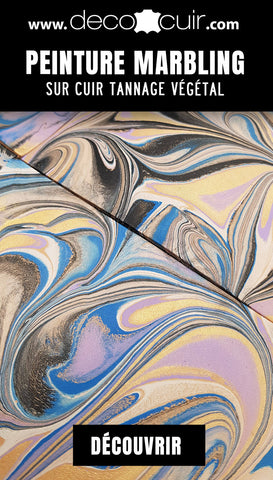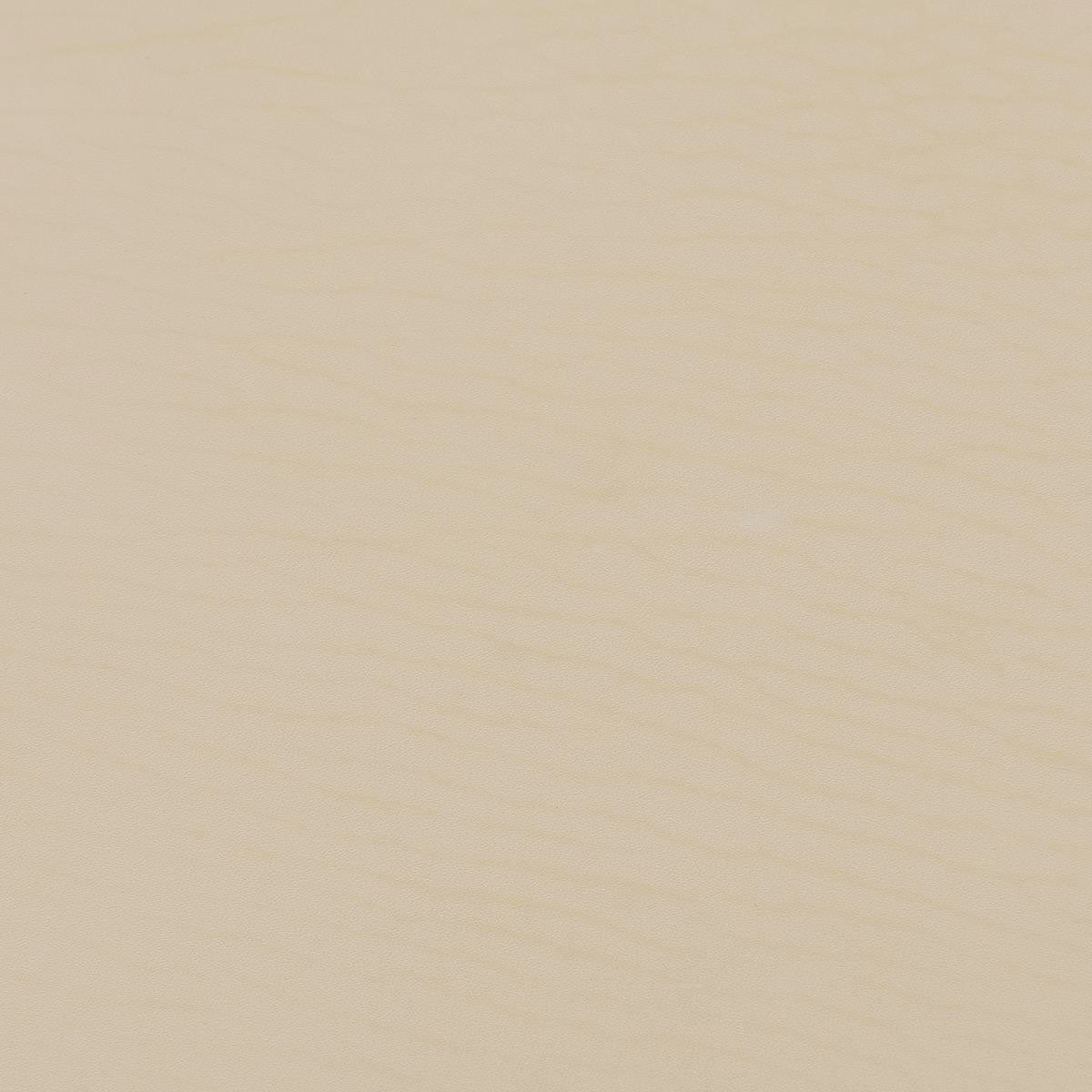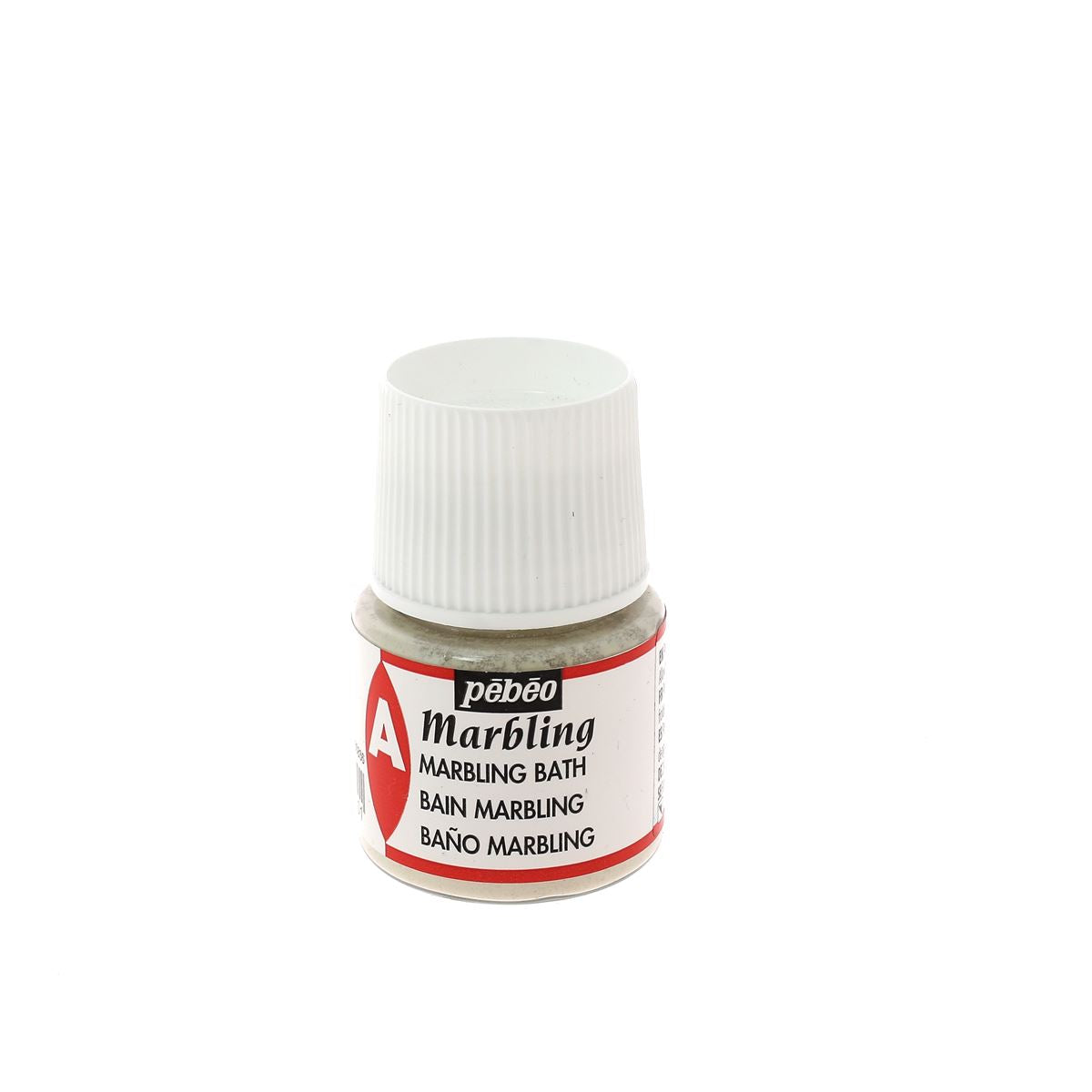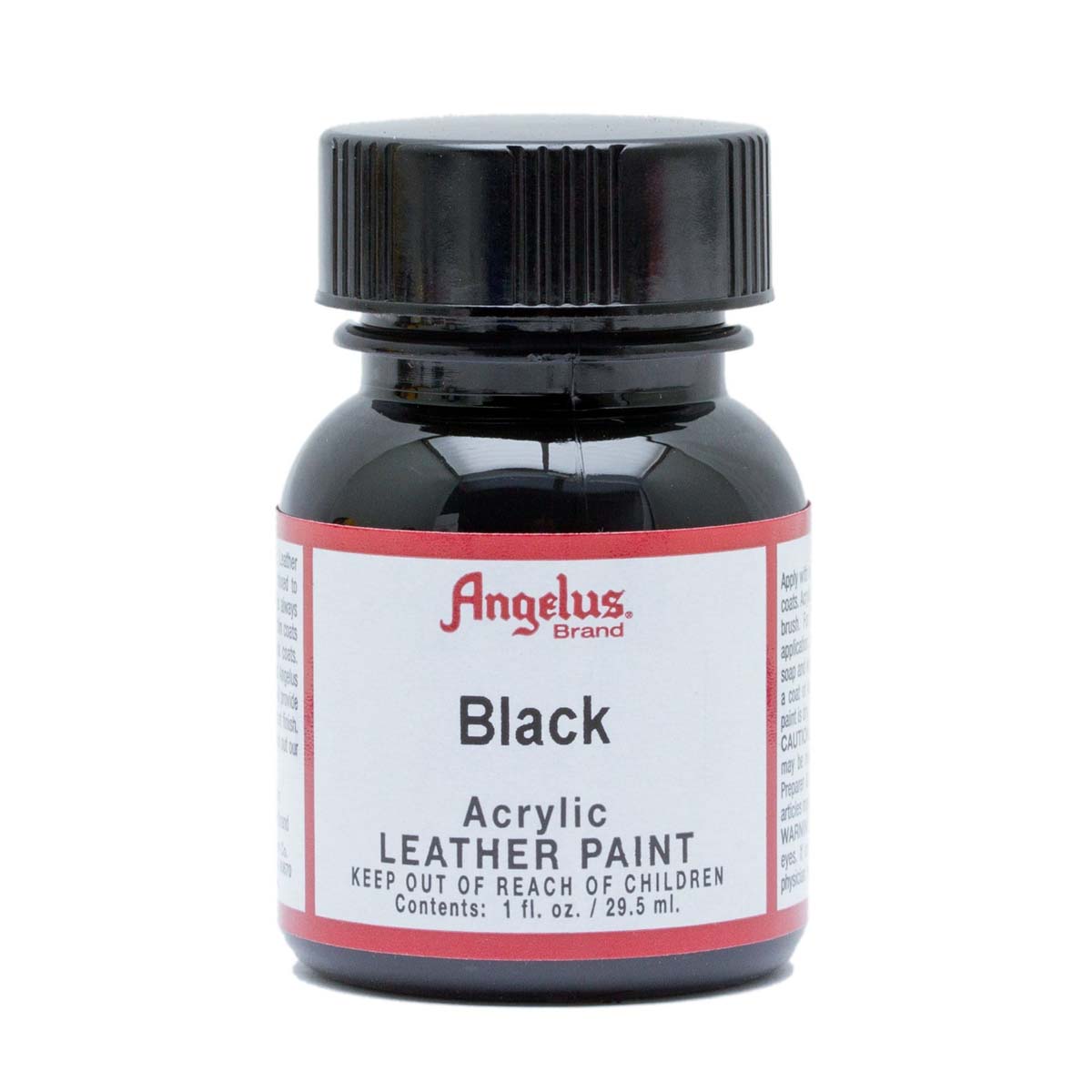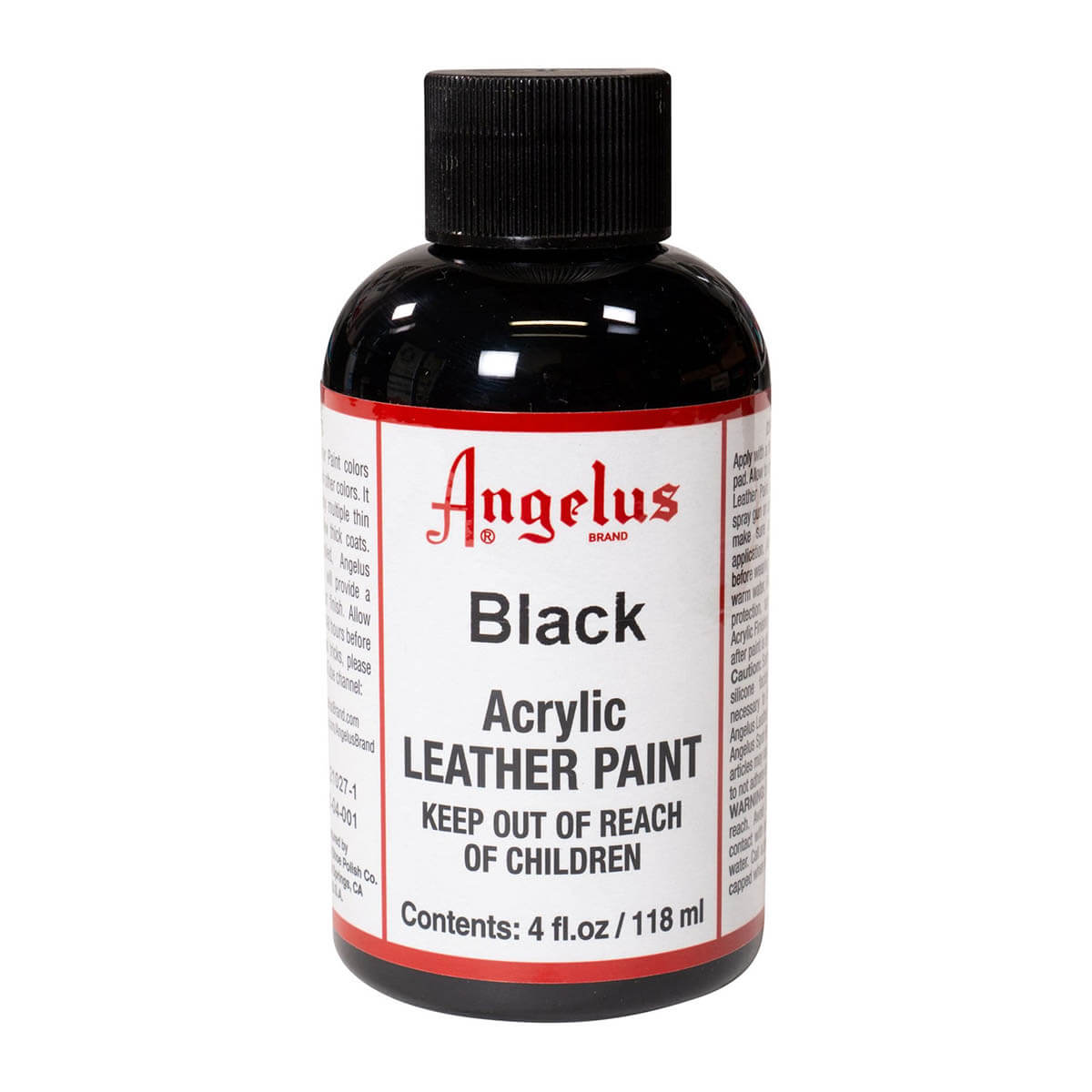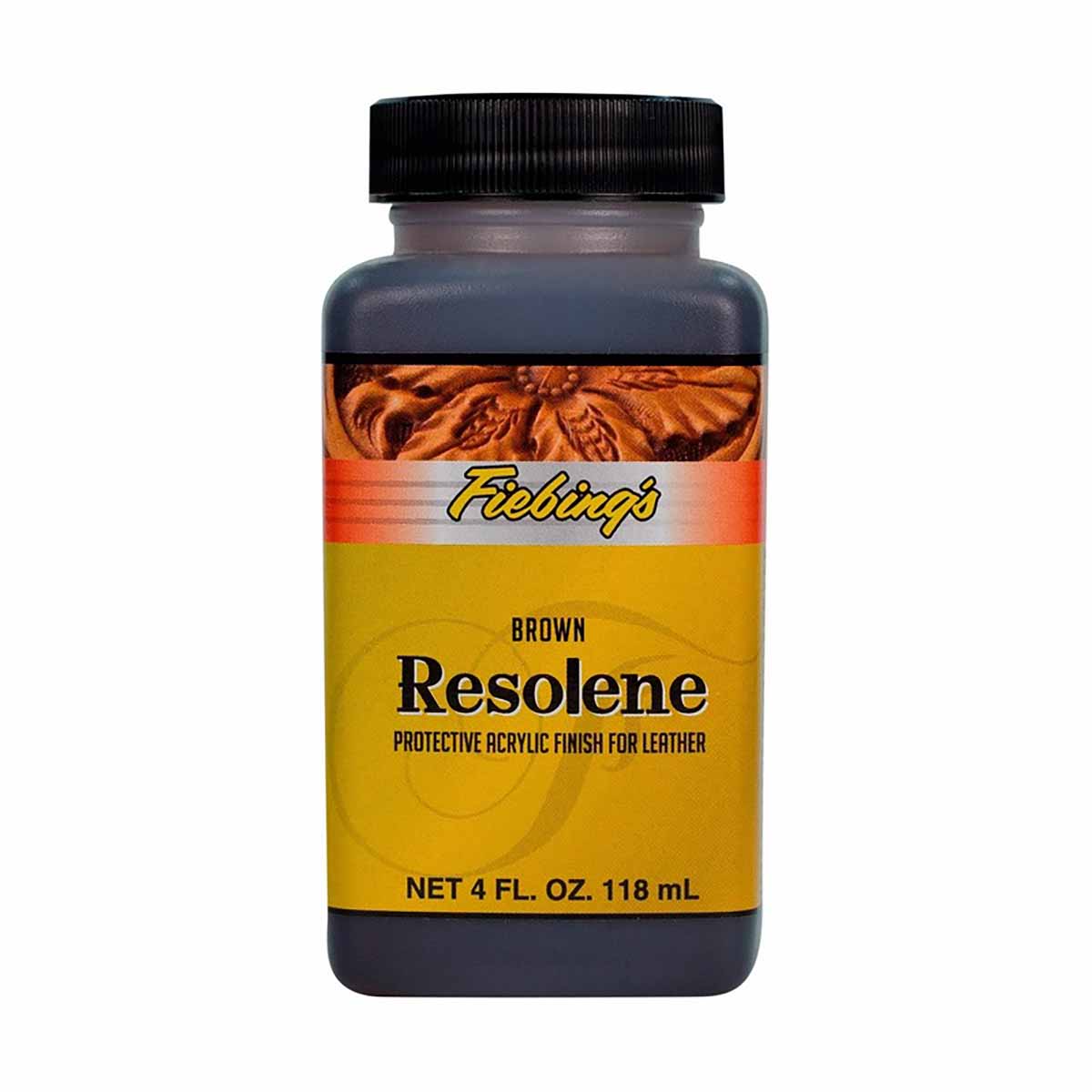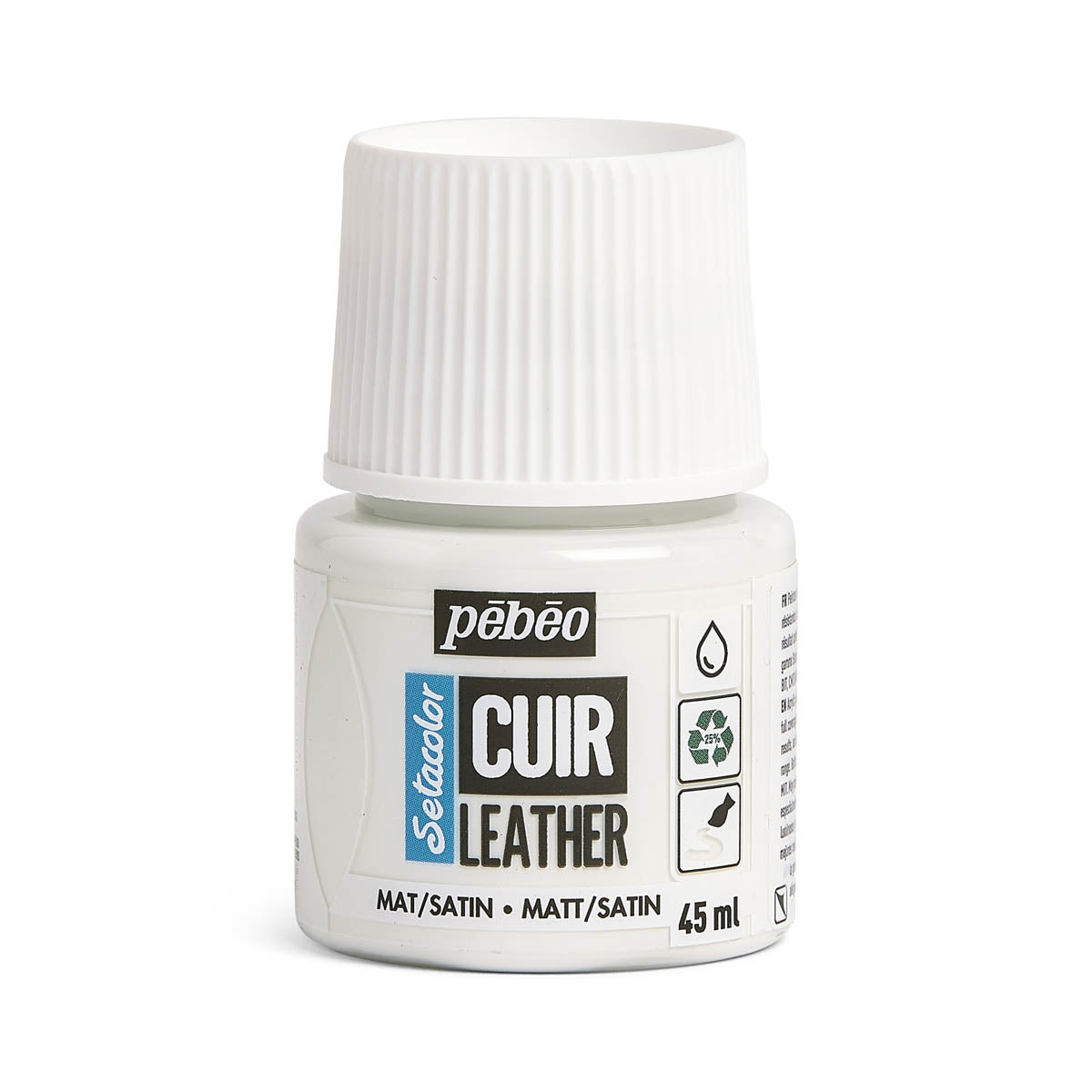WHAT IS THE MARBLING TECHNIQUE?
The marbling technique consists of placing drops of paint on the surface of a plastic tray filled with water and a thickener to create marbled effects on natural vegetable tanned leather.
This technique can also be worked on other materials: fabric, paper, bristol, recycled paper, wood, plaster, etc. 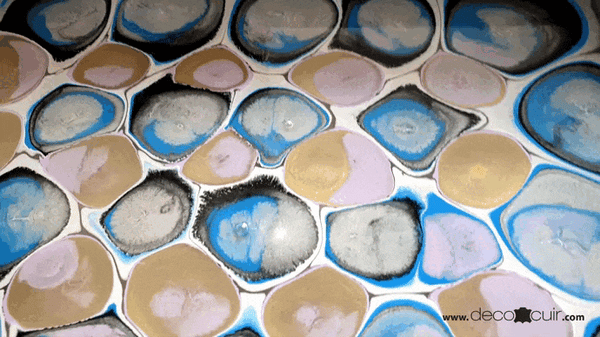

Please note, we would like to point out that this technique has nothing to do with leather dyeing. In addition, paint and stain should not be confused: the technique and the result are not the same. Be sure to check out our complete guide to leather dyeing.
SEE THE DYE GUIDE >
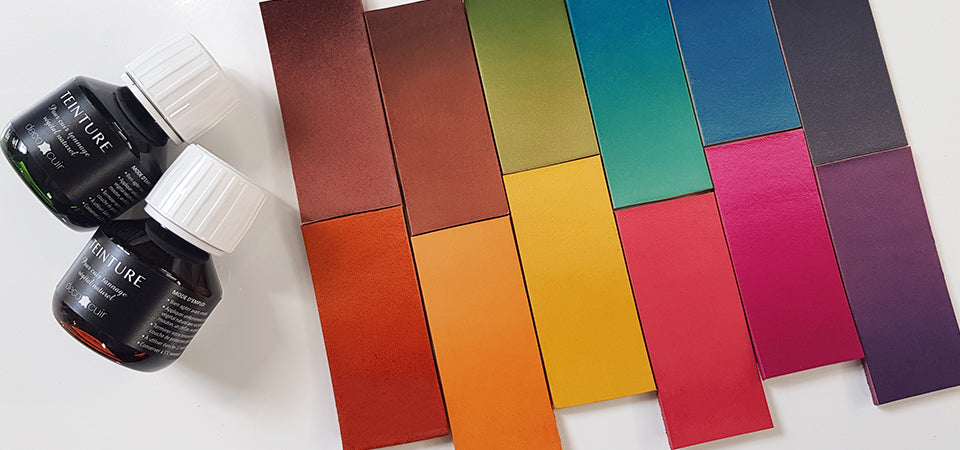
OUR ADVICE BEFORE YOU START
All information in this guide is given for information purposes only: we advise you to carry out tests before embarking on concrete projects. Consider that in this guide we give you the basics of a recipe with secret ingredients and that you must be creative, daring and patient to make it your own.
HOW TO GET MARBLED LEATHER?
First of all, marbling paint is only compatible with natural vegetable tanned leather . This technique does not work with leathers that are already colored or with mineral (chrome) tanning.
GUIDE: WHAT IS TANNING?
Regarding the choice of paint (and to avoid buying special marbling paints), we recommend Angelus acrylic leather paints (this also works with Pébéo - Setacolor acrylic leather paints) . These paints will need to be diluted with water to have the perfect consistency to float on the surface of the marbling bath with the right amount of pigments (see step 4 below and video).
 |
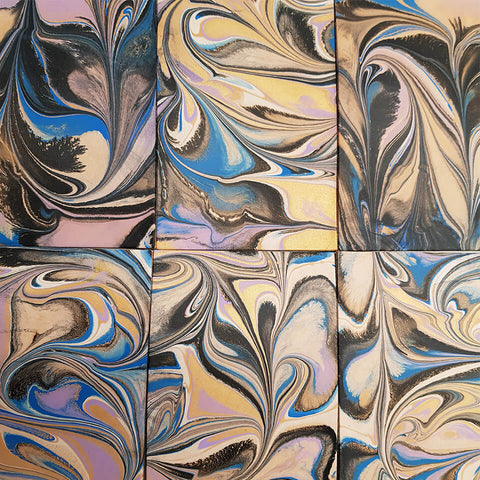 |
THE DIFFERENT STEPS
As a video is more meaningful than text:
1. PREPARE THE MARBLING BATH
Pour 1 liter of cold water into a salad bowl.
Sprinkle 2 teaspoons (7 grams) of marbling bath thickening/gelling powder.
Mix vigorously with a fork, whisk or electric mixer to avoid lumps.
2. LET THE MARBLING BATH REST
Let the preparation sit for at least 2 hours: the water will gel.
3. PREPARE THE MARBLING TRAY
Take a plastic tray larger than your piece of leather (and not too high) then put parchment paper in the bottom of the tray to make it easier to clean after marbling. We recommend taping the parchment paper to the sides of the tray so that it does not fall on your marbling work.
Transfer the thickening bath into the tank (a layer of gel 1 to 2 cm thick) while filtering it with a strainer (to remove the last lumps).
For information : the thickener bath can be used for several successive productions. We still recommend using a small quantity of the preparation and changing the bath often. 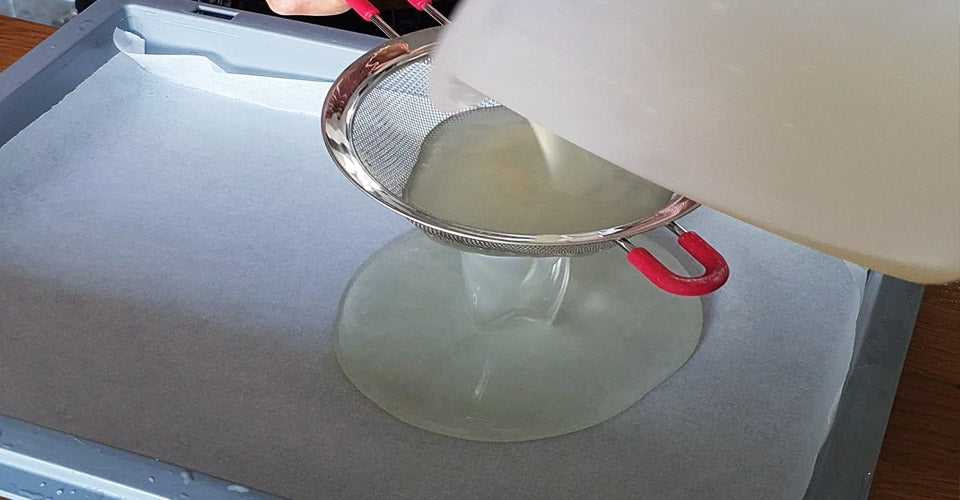
4. DILUTE THE ANGELUS ACRYLIC PAINT
This step is the most complicated but also the most important for optimal results.
Each selected Angelus paint must absolutely be diluted before use: dilute the Angelus paint with water until it has the consistency of milk . Shake the can of paint before mixing.
We recommend that you put the paint in a small container and add water little by little while testing the mixture in a "test" marbling bath until the paint diffuses perfectly on the surface. When your mixture is validated, transfer it into a plastic container with a pipette .
*We do not recommend the use of Thin Angelus. We validate our tests with standard Angelus, pearl and metallic paint. We have not carried out any tests with neon. 
5. DO THE MARBLING WORK
This step is the most satisfying and calls on your creativity.
Using a plastic dropper/can, drop paint drops onto the water as desired to create patterns. Alternate light and dark colors, letting the paint spread between each drop, the colors will overlap but never mix. The objective is to deposit the drops of paint into each other to obtain concentric spots.
When you think you have applied enough paint, wait a few seconds before working on them using a stick, a needle, a toothpick... By directing the colors in different ways it is possible to obtain patterns and varied marbling.
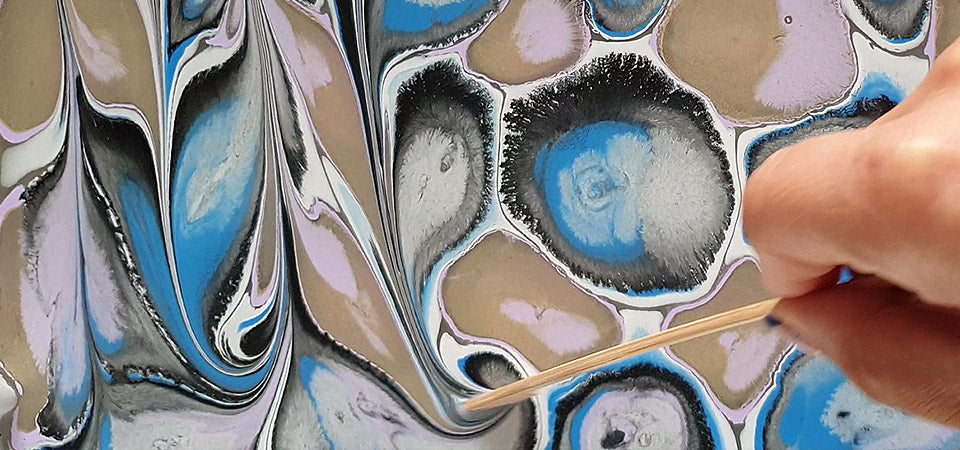
6. PLACE THE LEATHER ON THE SURFACE
Pop the air bubbles that have formed on the surface of the bath (so as not to have marks on your leather) and gently place the leather grain side down on the marbling work and wait a few seconds. Do not immerse the leather so as not to affect the rendering of the marbling.
As with dyeing leather: you must color the piece of leather before working on it (cutting, sewing, etc.). 
7. LET THE LEATHER DRY
Carefully remove the leather and admire your work! Place your creation on a flat surface and leave to dry for 24 hours (in a non-humid room). 
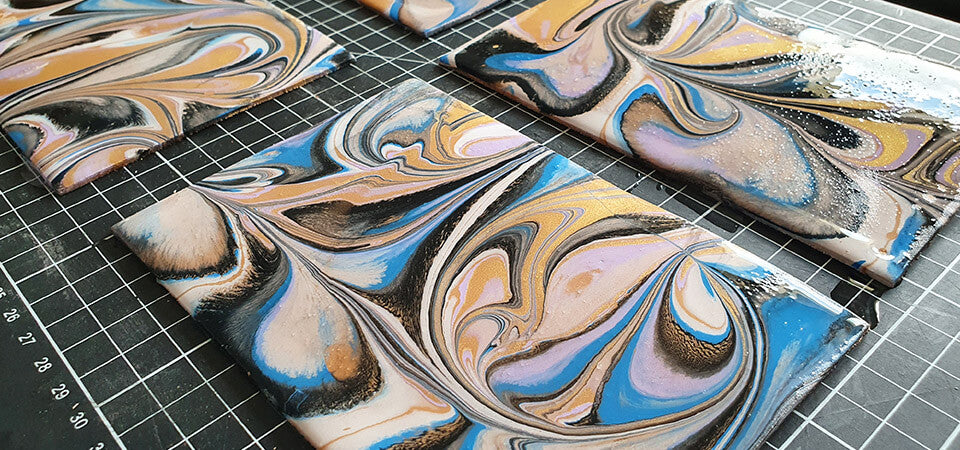
8. NOURISH THE LEATHER
Once dry (24 hours later) and before working on the piece of leather: nourish it with neat's foot oil because water dries out the leather. 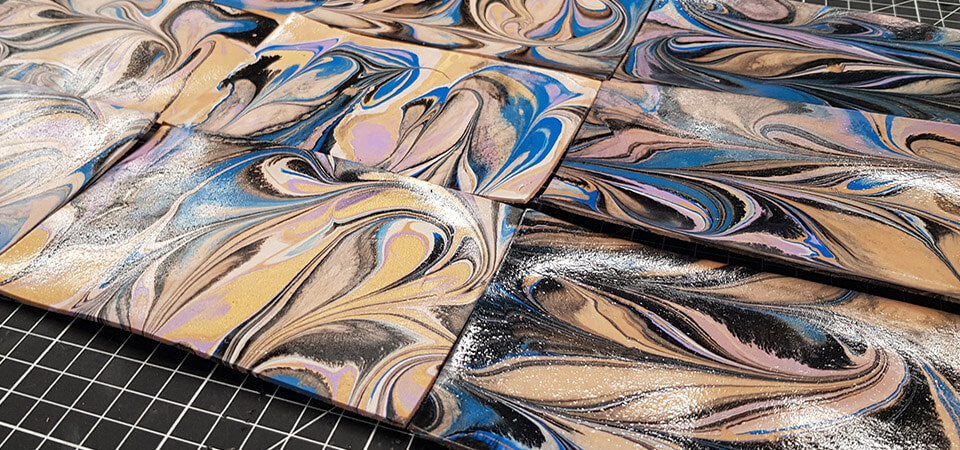
9. PROTECT YOUR CREATION
When your creation is finished (sewn and mounted): apply Fiebing's acrylic resolene protective varnish .
Lightly dampen a sponge then soak it in Resolene. Then apply a generous coat of varnish to your creation. Make circular movements. Leave to dry overnight and then buff the leather with a soft cloth. 
HOLDS OVER THE TIME OF MARBLING
If you protect your work well with varnish, there is no need to worry: the paint is very resistant (even when trying to rub or scratch the leather). 
INSPIRATIONS & TECHNIQUES
There is no secret, the more you test color mixtures the more you will learn: there is nothing better than practice and learning from your own experience . All the same, we advise you to check out the Instagram account of Mae Leather : an American who has a lot of experience in leather marbling. 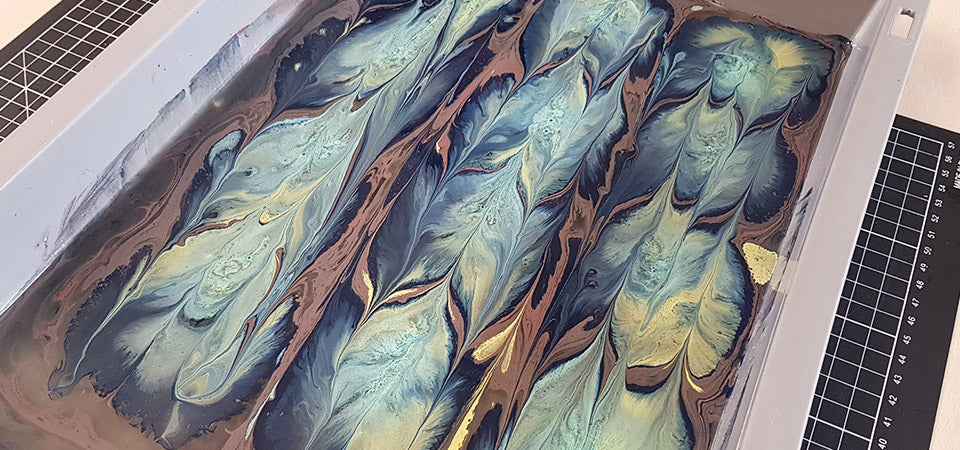
OUR SMALL LEATHER GOODS CREATIONS IN MARBLED LEATHER
Since marbling painting is a rather original technique in the world of leather working, we advise you to first create small creations. Below you will discover some ideas!
MARBLED LEATHER BOOKMARKS
Very simple to make, just laminate 2 pieces of marbled leather, cut them to the desired dimensions then work the slices with a trimmer and a finishing eraser (here Tokonole). Finally, make a hole at the top of your bookmark to place a rolling eyelet (diameter 5 mm) and secure a flat leather lace with a knot.
Dimensions of our bookmarks: 4.8 x 14.6 cm / 3 mm thick
LAMP-SQUARE GUIDE >
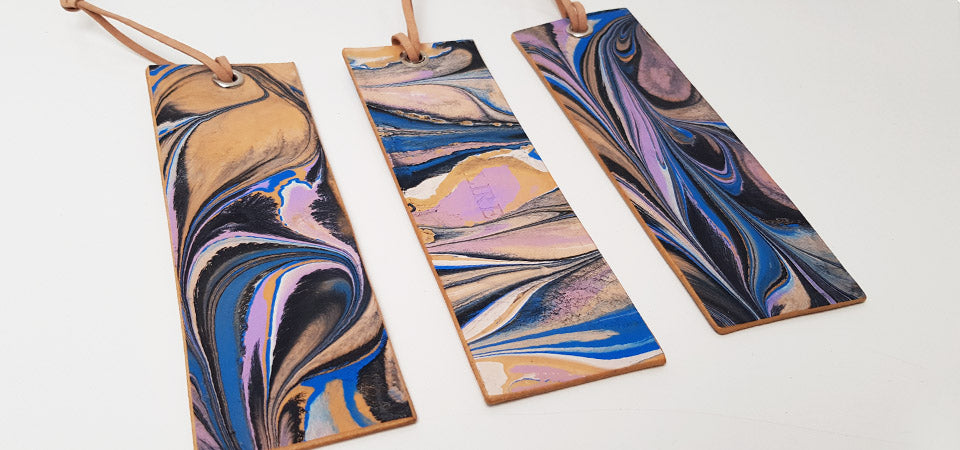
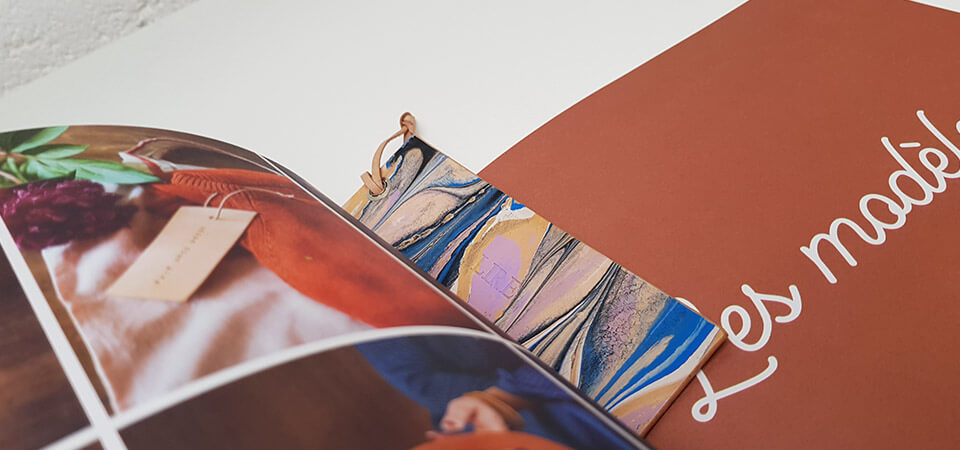
BOOBS KEY RING IN MARBLED LEATHER
Make this leather key ring to raise awareness of breast cancer screening during the Pink October campaign. Practical for slipping in your house keys or car keys, this trendy accessory will accompany you everywhere! This tutorial is seamless.
SEE THE FREE TUTORIAL AND PATTERN >
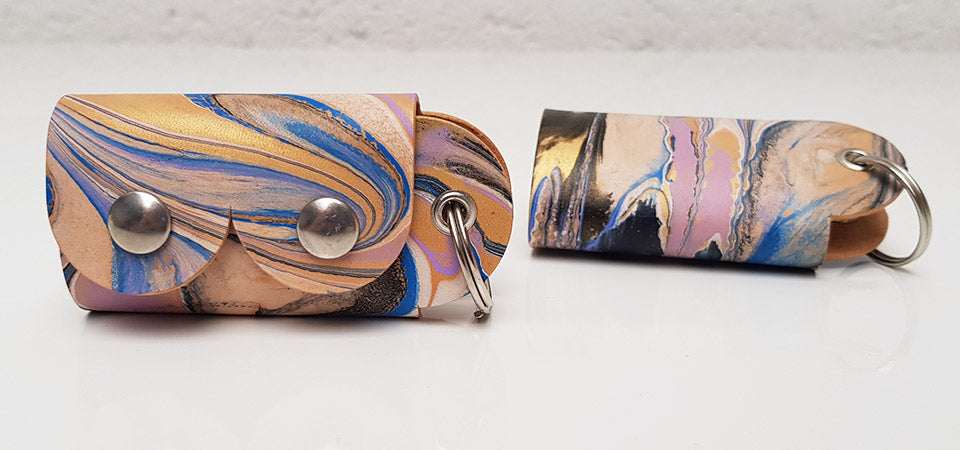
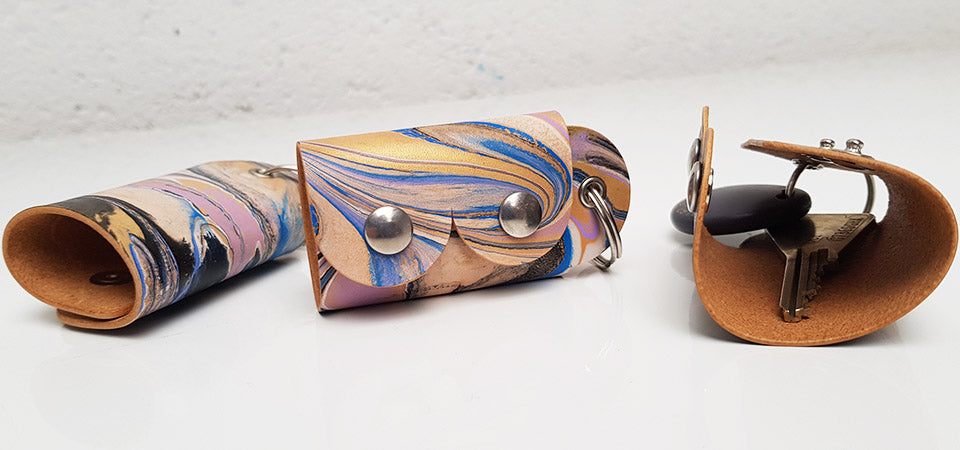
MINIMALIST MARBLED LEATHER CARD HOLDER
Make your minimalist leather card holder. It can hold up to 4 cards. Simple and classy, this card holder will accompany you everywhere! This tutorial is accessible to beginners with simplified sewing.
SEE THE FREE TUTORIAL AND PATTERN >
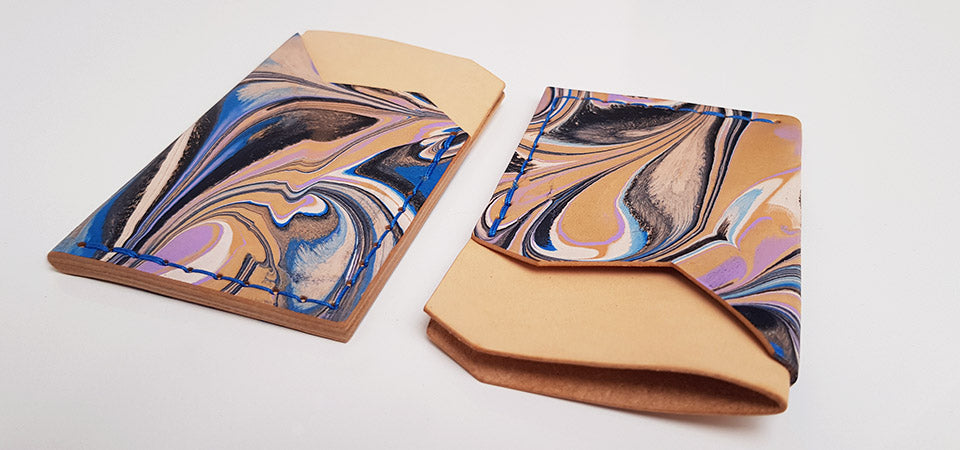

WHAT IF NOW IT WAS UP TO YOU TO SHARE YOUR CREATIONS AND TIPS WITH US?

DON’T HESITATE TO PIN THE PHOTO ON PINTEREST TO SHARE THE ARTICLE!
